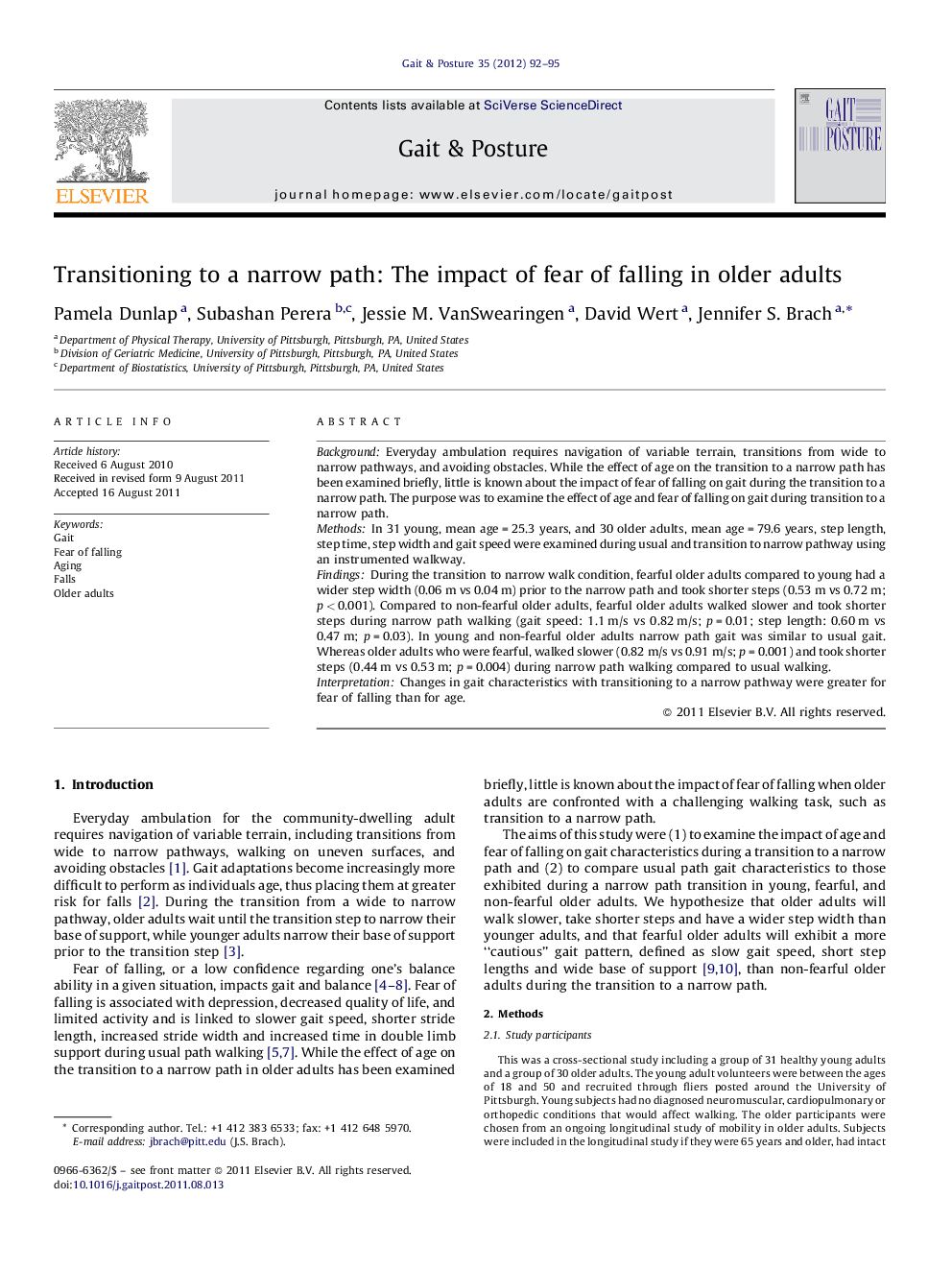| Article ID | Journal | Published Year | Pages | File Type |
|---|---|---|---|---|
| 6208211 | Gait & Posture | 2012 | 4 Pages |
BackgroundEveryday ambulation requires navigation of variable terrain, transitions from wide to narrow pathways, and avoiding obstacles. While the effect of age on the transition to a narrow path has been examined briefly, little is known about the impact of fear of falling on gait during the transition to a narrow path. The purpose was to examine the effect of age and fear of falling on gait during transition to a narrow path.MethodsIn 31 young, mean age = 25.3 years, and 30 older adults, mean age = 79.6 years, step length, step time, step width and gait speed were examined during usual and transition to narrow pathway using an instrumented walkway.FindingsDuring the transition to narrow walk condition, fearful older adults compared to young had a wider step width (0.06 m vs 0.04 m) prior to the narrow path and took shorter steps (0.53 m vs 0.72 m; p < 0.001). Compared to non-fearful older adults, fearful older adults walked slower and took shorter steps during narrow path walking (gait speed: 1.1 m/s vs 0.82 m/s; p = 0.01; step length: 0.60 m vs 0.47 m; p = 0.03). In young and non-fearful older adults narrow path gait was similar to usual gait. Whereas older adults who were fearful, walked slower (0.82 m/s vs 0.91 m/s; p = 0.001) and took shorter steps (0.44 m vs 0.53 m; p = 0.004) during narrow path walking compared to usual walking.InterpretationChanges in gait characteristics with transitioning to a narrow pathway were greater for fear of falling than for age.
